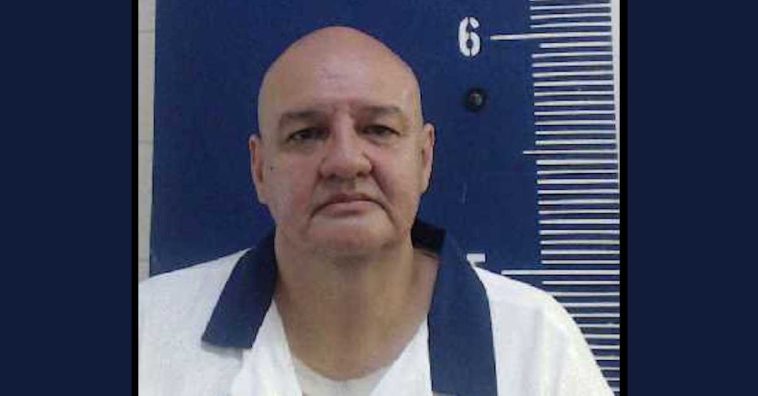U.S. District Judge J.P. Boulee recently issued a ruling regarding a case of a death row inmate in Georgia. The man, named Michael Wade Nance, suggested that the prescribed execution method of lethal injection could cause him immense pain due to his medical history. He proposed the firing squad as an alternate method of execution. However, the judge ruled against Nance’s assertion, not finding substantial proof to validate his claim.
Nance maintained that the application of the sedative pentobarbital, which is currently the only legally authorized execution measure in the state of Georgia, could result in unbearable pain. The condemned man claimed this could infringe upon his constitutional rights. Despite these assertions, Judge Boulee concluded that Nance failed to provide adequate evidence to support his argument.
Aside from lethal injection concerns, Nance contested that due to his difficult-to-locate veins and built-in compromises, the execution procedure might pose a significant risk. The contention was that during the execution, his veins could potentially rupture. If this were to occur, the injected substance could seep into surrounding tissues, thereby triggering excruciating pain.
The 63-year-old Nance stands convicted for the murder of Gabor Balogh in 1993. Following a bank heist at a Gwinnett County bank, Nance had abandoned his vehicle after the stolen money’s security dye packs detonated. He encountered Balogh exiting a parking spot at a nearby liquor store. In the confrontation that ensued, Nance fatally shot Balogh.
Moreover, Nance’s legal representation claimed that his extensive use of certain back pain medication might render the pentobarbital used in lethal injections ineffective or minimally effective. This complex medical history created the basis of their argument against the scheduled legal injection.
However, Judge Boulee referred to the state’s presented medical expert during a bench trial in May. The specialist noted that since Nance lodged his suit, he had successfully undergone three separate medical procedures. In all the cases, IVs had been placed without encountering any problems.
The question of whether Nance’s prolonged usage of his pain medication could hamper the execution drug’s effectiveness was also addressed. Here, Judge Boulee brought attention to the testimony of a doctor summoned by Nance’s lawyers, who commented that it was unknown what the ultimate outcome would be.
To argue against an execution method supported by the Eighth Amendment, the U.S. Supreme Court has said that an individual must show a ‘substantial risk of serious harm’. Furthermore, ‘known and available alternatives’ of execution that could greatly diminish the risk of serious pain must be presented.
For this reason, Nance’s legal representation had suggested the firing squad as a replacement for the lethal injection procedure. This initial lawsuit was lodged in January 2020. However, in March of the same year, Judge Boulee ruled Nance’s arguments procedurally barred as they had been lodged after an overly long period.
The judge also concluded that Nance failed to showcase how his constitutional protections against cruel and unusual punishment would be violated. The judgment was not in Nance’s favor and so he decided to seek the judgment of a higher court, leading to an appeal at the 11th U.S. Circuit Court of Appeals.
These legal proceedings resulted in the conclusion that since lethal injection is the sole execution method sanctioned by Georgia law, Nance was in essence challenging the legitimacy of his death sentence. The panel argued that Nance was procedurally barred from bringing such a challenge to court.
Following this, Nance appealed further to the U.S. Supreme Court, which disagreed with the 11th Circuit’s ruling. Justice Elena Kagan penned the majority opinion. In her argument, she stated that when challenging an execution method in Georgia, proposing a method outside of the state’s law was permissible.
Justice Kagan wrote that there is no cause to assume that modifying state law to permit execution by firing squad would pose a ‘substantial impediment’ to executing the death sentence. This turn of events led to the case being returned to Judge Boulee for reconsideration.
During this second bench trial in May, Judge Boulee heard arguments suggesting that the firing squad would result in a rapid death. Despite these arguments, the judge asserted that since Nance had not demonstrated proof of severe pain during lethal injection due to his medical conditions, there was ‘no need to address’ the firing squad topic.
The case provides an interesting look into the legal process surrounding death sentences, the rights of inmates, and method of execution debates. This ruling, along with Justice Elena Kagan’s words, may well set a precedent for future death penalty cases involving medical challenges and alternative execution methods.
In conclusion, while Nance’s arguments have compelled the courts to scrutinize the effectiveness of lethal injection further given certain medical conditions, they have yet to make a significant impact in altering the execution method. The question of what constitutes cruel and unusual punishment in the context of capital punishment remains at the forefront of death penalty debates.


